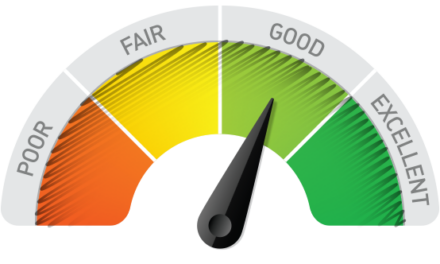California, Iowa, New Hampshire, and Vermont have brought multiple stakeholders into their reform processes. What can we learn from their example?
In education, stakeholders include any individuals or groups with an interest in the success of schools, districts, or the larger public education system. This diverse group includes students and families, teachers and administrators and their unions, business leaders, civil rights organizations, and the public more broadly. Our research suggests that early, systematic, and ongoing engagement with diverse stakeholders is essential for strengthening the design of and fostering broad support for ambitious educational policies (Bae & Stosich, 2018).
Under the Every Student Succeeds Act (ESSA), state and local leaders have greater responsibility for and flexibility in designing educational policies than was granted under No Child Left Behind (Darling-Hammond et al., 2016). This increased flexibility could foster policy design that is better matched to local needs and aspirations, but, ultimately, it is up to state leaders to determine the degree to which policy making is an open process that encourages direct input and participation from the public (Louis et al., 2008).
Whether and how educational leaders will leverage this opportunity to design truly innovative educational policies is yet to be seen, but lessons may be drawn from four states — California, Iowa, New Hampshire, and Vermont — that took significant steps in redesigning their educational systems prior to the introduction of ESSA.
Who influences policy?
California, Iowa, New Hampshire, and Vermont were all members of the Innovation Lab Network (ILN), a working group of the Council of Chief State School Officers (CCSSO). States in the network committed to taking action to identify and implement student-centered approaches to learning, such as the use of performance-based assessments, school quality reviews, multiple measures of accountability, and building teacher instructional capacity. Thus, even prior to ESSA, these states were actively working to redesign or create bold new educational policies to better support student learning.
These four states had each tackled a unique policy issue: in California, creating a more equitable and streamlined school funding system; in Iowa, improving teachers’ professional learning, retention, and career pathways; in New Hampshire, redesigning assessment for competency-based learning; and in Vermont, revising school standards to support more equitable and meaningful learning. Additionally, these states were geographically and politically diverse and included the most populous state in the country as well as two of the least. Despite these differences, educational leaders in all four states found stakeholder engagement to be critical for strengthening both policy design and implementation.
To understand the process better, we interviewed 42 educational leaders who represented a diverse array of positions and organizations and each of whom had intimate knowledge of their state’s education policy-making process. These leaders included state chiefs, deputies, directors of accountability in state education agencies (SEAs), directors of teacher and administrator unions, state board of education members, school board association members, legislative staff, and others. We also collected and reviewed documents related to the state policies, including formal policy documents and information from state websites. Although each state had a distinct policy agenda, leaders in all four states engaged in an extensive process of stakeholder engagement to identify viable solutions, address policy problems, and garner support for their respective policies.
California’s Local Control Funding Formula (2013)
California’s Local Control Funding Formula (LCFF) represents a historic shift in the way districts and schools receive state funds. Previously, school finance had been based on participation in specific programs (e.g., teacher professional development, textbook purchasing, providing tutors), which created burdensome spending restrictions and regulations for local districts and limited their ability to use the funds strategically. The goals of LCFF were to simplify the funding process, provide more fiscal resources to districts whose students had the greatest needs (e.g., low-income students, English language learners, foster youth), and give districts more autonomy and flexibility to allocate funds.
In January 2012, the governor attempted to introduce school finance reform through a weighted student funding formula that would have shifted decision making from the state capitol to local districts and provided funding to school districts based on student needs. Legislators, however, rejected it, perhaps viewing the policy as too “governor-driven.” Thus, with the LCFF policy, success required developing a broader base of support by engaging with diverse stakeholders.
The governor’s staff and the Department of Finance engaged in a listening tour and provided multiple opportunities for stakeholders to give input into the new finance system. A state leader we interviewed explained that these stakeholder engagement sessions brought together “administrators, teacher groups, as well as state officials and advocates, to have very concrete conversations about what this would look like.” Through these sessions, the public was able to offer “true feedback” and voice concerns to ensure the funding system would be driven by local needs.
In addition, the stakeholder meetings brought together special interest groups — such as advocates for English learners, teachers unions, gifted and talented programs, and the arts — who had a vested interest in keeping specific categorical programs funded. State leaders then adjusted their policy in response to their critiques. For instance, one state leader recalled,
You had both the folks in the civil rights community and advocacy groups and community groups who were really excited about the idea of [LCFF] but were very deeply concerned that there was nothing in there that made sure that this funding would actually result in the students who generate those dollars benefiting in any way, shape or form . . . because there was nothing on the accountability side.
In response to these concerns, state leaders created the Local Control and Accountability Plan, a strategic planning tool to guide district officials’ budget decisions and provide transparency in how the funds are spent and for what purposes.
Through this process, state leaders learned that stakeholder engagement was effective in crafting the policy and building broad support for it. Of the 13 leaders we interviewed, 11 cited these efforts as a critical element to getting the new formula to pass. One state leader concluded, “when you have conversations with people around something like this, they feel part of the process and they feel part of the solution . . . They feel some ownership of it. And then, they want it to be successful.”
Iowa’s Teacher Leadership and Compensation System (2013)
In 2013, Iowa established the Teacher Leadership and Compensation (TLC) System to meet five central goals: to attract capable new teachers by offering competitive starting salaries and high levels of support, to retain effective teachers by providing differentiated career pathways, to reward accomplished teachers with leadership opportunities that come with additional compensation, to increase collaboration among teachers, and to improve student achievement by strengthening teachers’ effectiveness. The TLC System was groundbreaking in both its statewide reach and the $150 million in annual funds committed to support and sustain the system.
According to state education leaders, designing a teacher leadership policy that would be supported by educators, families, and both conservative and liberal policy makers represented a major challenge. Some legislators feared that the policy would result in raises for teachers without improved student achievement. Teachers and administrators viewed the initial proposals for teacher leadership systems as overly prescriptive and a poor fit with existing teacher leadership opportunities.
Early, systematic, and ongoing engagement with diverse stakeholders is essential for strengthening the design of and fostering broad support for ambitious educational policies.
To get over these hurdles, a task force that included representatives from the teacher and administrator unions, state board, state department of education, business community, and the legislature came together to make recommendations to the legislature on the leadership policy. The task force contributed to the success of the TLC System by using a collaborative process for consensus-based decision making. As one leader explained,
We had a . . . diverse design group that was made up of . . . practitioners, politicians in the legislature on the left and the right, people from the state board . . . the different associations, people representing business interests and . . . community interests, policy wonks and department staff . . . We settled on a consensus-based model which was a bold step . . . That forced everybody to put aside some of their maybe more ideological partisan views and realize nothing’s emerging from this group unless we can get to complete consensus . . . I think it also forced us all to be . . . pragmatic, and ultimately led to it sailing through the legislature.
As another leader put it, “The task force really did develop the system.” Based on the task force’s recommendations, the policy allowed for local district flexibility in designing TLC systems in accordance with a set of quality guidelines rather than requiring the adoption of a specific teacher leadership model, as originally proposed by policy makers. According to most state leaders (8 out of 11) interviewed, having these diverse stakeholder groups help develop the policy and then work to garner support for it among the broader public created broad buy-in across sectors.
New Hampshire’s Performance Assessment of Competency in Education (2015)
Before the passage of ESSA, the U.S. Department of Education allowed states to apply for a waiver that gave them flexibility in meeting the requirements of the Elementary and Secondary Education Act. In 2015, As part of its waiver, the New Hampshire Department of Education (NHDOE) was granted permission to pilot an innovative new assessment and accountability system, the Performance Assessment of Competence Education (PACE). PACE combines local control with statewide accountability in an integrated system of assessment that includes locally designed performance tasks, performance tasks across multiple districts, and periodic statewide assessments. PACE is intended to improve students’ learning opportunities by more closely integrating curriculum, assessment, and instruction as part of a competency-based approach.
Six of the nine state educational leaders with whom we spoke emphasized the importance of developing PACE through a collaborative design process that engaged state and local leaders as partners. Two structures supported engagement among stakeholders: the state accountability task force and the PACE lead team. The state accountability task force included members of the NHDOE, technical assistance providers, a parent, and leaders from schools, districts, and universities. According to one state leader, it was this group’s discussions that led to the development of PACE. The PACE lead team, made up of local educators in the early implementing districts, was involved in discussions about the design of the system from the beginning. A district-based leader described this process:
The New Hampshire Department of Education came to us and asked would we want to be part of this pilot that they were trying to get off the ground called PACE. . . . We’re doing some performance assessments here locally and just chugging along. We said, “Sure, we’re interested.” . . . Then we had several conversations back and forth with the U.S. Department of Ed trying to get basically a waiver for New Hampshire to pilot this program. . . . We saw this as an opportunity to further our work with the support of the Department of Ed.
According to state educational leaders, educators in lead districts — such as the one described above — strengthened the design of PACE by working in partnership with the NHDOE and influencing key decisions on professional development approaches, resource allocation, and the design of common assessments.
Vermont’s Education Quality Standards (2013)
The Education Quality Standards (EQS) revised and replaced the state’s former School Quality Standards, which sought to ensure that all students in Vermont are “afforded educational opportunities that are substantially equal in quality” (16 V.S.A. § 165). The EQS, however, represents a shift toward personalization as well as demonstrations of proficiency (Vermont Agency of Education, 2014). In addition, the EQS requires the Vermont Agency of Education to conduct regular Education Quality Reviews (EQR) to ensure that schools are moving toward equity and improving outcomes for all students.
Eight of the nine Vermont leaders we interviewed described stakeholder engagement as critical for the design and support of the EQS policy. A state leader recalled attending stakeholder meetings all around the state to listen to concerns regarding the new standards: “Just hearing public feedback in that way . . . definitely affected our thinking in certain areas . . . it really sparked a lot of debate on the Board. And then it allowed us to flesh it out a little more.” Another state leader shared how the stakeholder engagement process encouraged active involvement from the community: “[W]e got a group of people assembled that were willing to roll up their sleeves and work with us on putting these new Education Quality Standards together. From the beginning it came from out in the field to change.” State leaders were committed to seeking out diverse voices and perspectives to inform and influence the development of the EQS.
A similar process was employed to develop the EQR. Led by a deputy secretary of the Vermont Agency of Education, the agency sought the involvement of a wide variety of stakeholders, including educators, administrators, and representatives from industry and advocacy groups. One state education leader explained, “[W]e involved stakeholders and Agency staff, school folks, parents — the whole nine yards — in really [asking] what would we need in order to know if our schools were quality or not?” Another state leader recalled that stakeholders’ opinions and viewpoints shaped decisions related to how the EQR would be used, how data would be represented, whether commendations would be given, and whether the areas of improvement would be presented as recommendations or requirements. The state leader recalled that it “was very valuable to have stakeholders from the field there for that.”
It is critical to include stakeholders from marginalized communities both to increase transparency and trust and to develop a policy that takes their needs into account.
Implications for education leaders and policy makers
Although these four states differed in their approaches to stakeholder involvement, their work offers important lessons regarding the value of getting diverse groups involved in policy development.
Engage stakeholders early
Each state’s policy design was bolstered by the steps taken to actively solicit stakeholders’ feedback early in the process. Stakeholder input helps leaders articulate community values and concerns, and aligning policies with these expectations is likely to increase support for the policy and improve its chances of successful implementation. Early engagement ensures that key areas of agreement and disagreement will be brought to light and considered before foundational decisions are made.
Create structures to bring together diverse stakeholders
Which stakeholders you involve in the policy-making process and how you involve them matter. Just asking for input is insufficient if you do not put actual structures in place that enable diverse groups and voices to influence the policy-making process. Those who are not typically together in the same room and who often disagree need opportunities to hear varying viewpoints, negotiate differences, and build consensus for policy success.
Moreover, stakeholder input is an important factor in increasing the quality and trustworthiness of education policy aimed at improving educational outcomes for our most vulnerable students. Thus, it is critical to include stakeholders from marginalized communities both to increase transparency and trust and to develop a policy that takes their needs into account. The lack of relational trust between stakeholders and state educational agencies can negatively affect perceptions and understanding of the policy.
Encourage local flexibility and authority
Regardless of how well thought out a policy is, stakeholders on the ground will interpret and, therefore, implement the policy in different ways. As a result, steps should be taken to encourage local flexibility and authority rather than rigid enforcement of policy. Indeed, in the states that we studied, stakeholders demanded that the policies respond to local needs and that they have authority to adapt their policies to the local context. In doing so, the stakeholder engagement process was essential for policy success and provided a platform for sustainability.
The benefits of stakeholder engagement
Education leaders identified three ways stakeholder engagement contributed to policy:
- Stakeholder engagement influenced policy design and built broader public support for policy implementation.
- Deliberate structures and processes (e.g., “listening tours” and task forces) facilitated early and broad participation in policy design.
- Involving diverse stakeholders (e.g., teachers, administrators, legislators, union leaders, community advocates) encouraged agreement and fostered support among individuals and groups with opposing views.
Notably, these leaders did not use these processes simply to explain the policy to the public. Instead, they sought stakeholders’ input, which ultimately influenced the policy design. Including lawmakers enabled them to find the common ground that was essential to craft a policy that would pass the legislature. Furthermore, giving voice to a diverse group of constituents with different interests increased the likelihood that these policies would have the broad support they needed not just to be enacted, but to be implemented successfully.
References
Bae, S. & Stosich, E.L. (2018). Redesigning state policy for meaningful and equitable learning: Lessons from California, Iowa, New Hampshire, and Vermont. Stanford, CA: Stanford Center for Opportunity Policy in Education.
Darling-Hammond, L., Bae, S., Cook-Harvey, C., Lam, L., Mercer, C., Podolsky, A., & Stosich, E.L. (2016). Pathways to new accountability through the Every Student Succeeds Act. Palo Alto, CA: Learning Policy Institute.
Louis, K.S., Thomas, E., Gordon, M.F., & Febey, K.S. (2008). State leadership for school improvement: An analysis of three states. Educational Administration Quarterly, 44 (4), 562-592.
Vermont Agency of Education. (2014). Introduction to the Education Quality Standards. Barre, VT: Author.
Originally published in May 2018 Phi Delta Kappan 99 (8), 8-12. © 2018 Phi Delta Kappa International. All rights reserved.
ABOUT THE AUTHOR

Soung Bae
SOUNG BAE is a senior learning specialist at Schwab Learning Center at Stanford University in Stanford, Calif.












